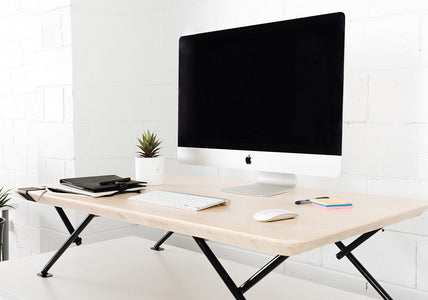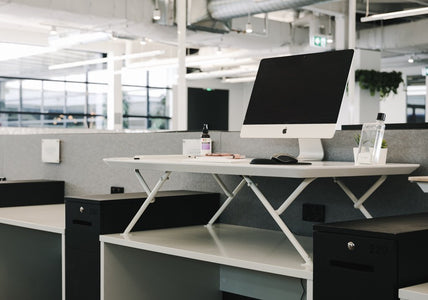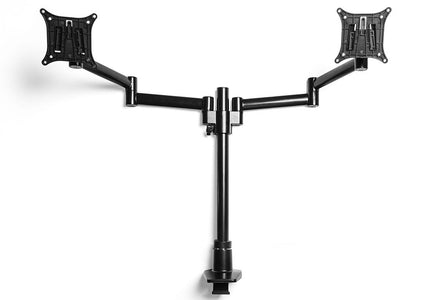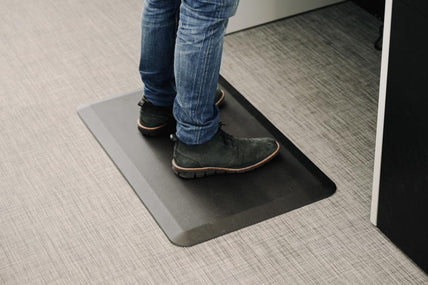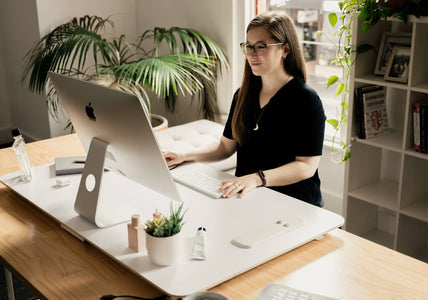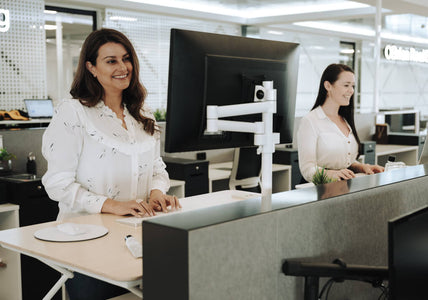Busting 5 Common Misconceptions on Ergonomic Office Furniture
By Daniel Angelini on February 15, 2021The interior design and furniture choices in professional setups like offices go beyond style. Good looks can set the tone and contribute to an inspiring atmosphere, but the prevalence of ergonomic furnishing isn’t all about fashion fads in the corporate world.
Ergonomics is booming more than ever, which means there are misconceptions surrounding it that keep corporations from investing in equipment that could enhance their work culture in more ways than one.
Common Misconceptions About Ergonomic Furniture
Myth #1: Ergonomics is All About Comfort
One of the most significant selling points of ergonomic furniture is that it strives to make users comfortable, but it’s more of an effect of good design. Couches, for instance, often feel comfortable, but the design doesn’t encourage good posture, nor does it do anything to support your spine.
Ergonomics doesn’t focus on what’s comfortable but more on elements that are good for the body. A standing desk may cause discomfort for first-time users, especially without an anti-fatigue mat to ease the feet, but it’s a healthy choice that can improve your physical health in the long run.
Ergonomic desks are made with your overall well-being in mind, with the goal of reducing your risk of weight gain, blood sugar levels, back pain, and even heart disease.
Myth #2: Ergonomics is Another Marketing Trend
Many people assume that ergonomics is just your latest fad that furniture companies use to sell premium products. While it’s true that ergonomic furniture often comes with a hefty price tag, every penny is worth it because it offers a unique design with safety features you wouldn’t find in any other office equipment.
Most office chairs are engineered with no regard for the importance of lumbar support, leaving employees with little-to-no options to adjust the angle according to their unique spinal curves. Office furniture, even when made with a comfortable cushioning and state-of-the-art aesthetic appeal, will do your body no favours. Ergonomic design is not a one-size-fits-all, which means it can offer excellent back support and extensive adjustments to suit the user.
Myth #3: Ergonomic Furniture is for People with Physical Conditions or Injuries
Many people seek ergonomic furniture to address problems like wrist pain, eye strain, or backaches, but the market isn’t limited to those suffering from injuries, chronic pain, or repetitive stress.
Ergonomic design acts as a preventive health measure, so anyone can benefit from it since all employees with a nine-to-five desk job are vulnerable to developing injuries due to poor posture, repetitive actions, and muscle overuse.
By investing in ergonomic office furniture, it can aid people in recovery and prevent these injuries from developing in the first place.
Myth #4: Ergonomic Furniture is Only for Office Setups
Ergonomic furniture is skyrocketing in office spaces, but it isn’t limited to those who work in your typical cubicle office. Different employees in various industries can benefit from ergonomic furnishing since it’s built to support all body parts.
People who need to stand for long periods, like in retail stores, can benefit from an anti-fatigue floor mat. Meanwhile, people who type all day can improve their posture and mitigate the risk of developing carpal tunnel syndrome with a keyboard tray.
Ergonomic design is all about supporting your health, which means it’s applicable no matter what the job entails.
Myth #5: Ergonomic Furniture is Expensive and a Waste of Money
It’s challenging to grasp the impact of ergonomic design since it acts as a silent hero, but you can spot its health-boosting effects by looking at your employees. Ergonomic furniture can lower absenteeism since it lowers stress levels and boosts satisfaction, which can have a positive domino effect on other factors in your office.
After all, happy and healthy employees can pave the way for a productive work culture, which can also boost your retention rate and recruitment. A safe culture also lowers medical claims and employee sick days, meaning it can be a money-saving strategy too.
The Bottom Line: Debunking Ergonomic Myths for Curious Shoppers
When people think of ergonomic office furniture, the images of comfortable desk chairs, adjustable desks, and monitor stands come into mind. However, the ergonomic design goes beyond providing comfort as it focuses on creating products with excellent lumbar and back support and adjustability.
Ergonomics is Not Another Marketing Trend
It’s easy to think that ergonomics is equal to investing in a comfortable desk chair, but the concept behind ergonomics focuses on purpose-driven design. The rise of height-adjustable standing desks, for instance, isn’t made to be a gimmick.
It’s made to address real problems that are often overlooked in your everyday office setup, such as the detrimental effects of sitting for too long on your health. Seeing its role in boosting employee satisfaction and safety, we’re here to bust common myths that keep people from maximising the health-boosting benefits of an ergonomic workstation.
How Can Movi Workspace Enhance your Workspace?
If you’re looking for the best work desk setup, get in touch with us at Movi Workspace. We can help enhance your work-from-home experience by incorporating ergonomic upgrades in your space, from saddle office chairs, anti-fatigue floor mats, and more.
Browse our website and check out our wide selection of height-adjustable standing desk in Australia, where you can feel the MOVI difference with our smart features, automated lift, and unique design that are sure to take your space to the next level.

